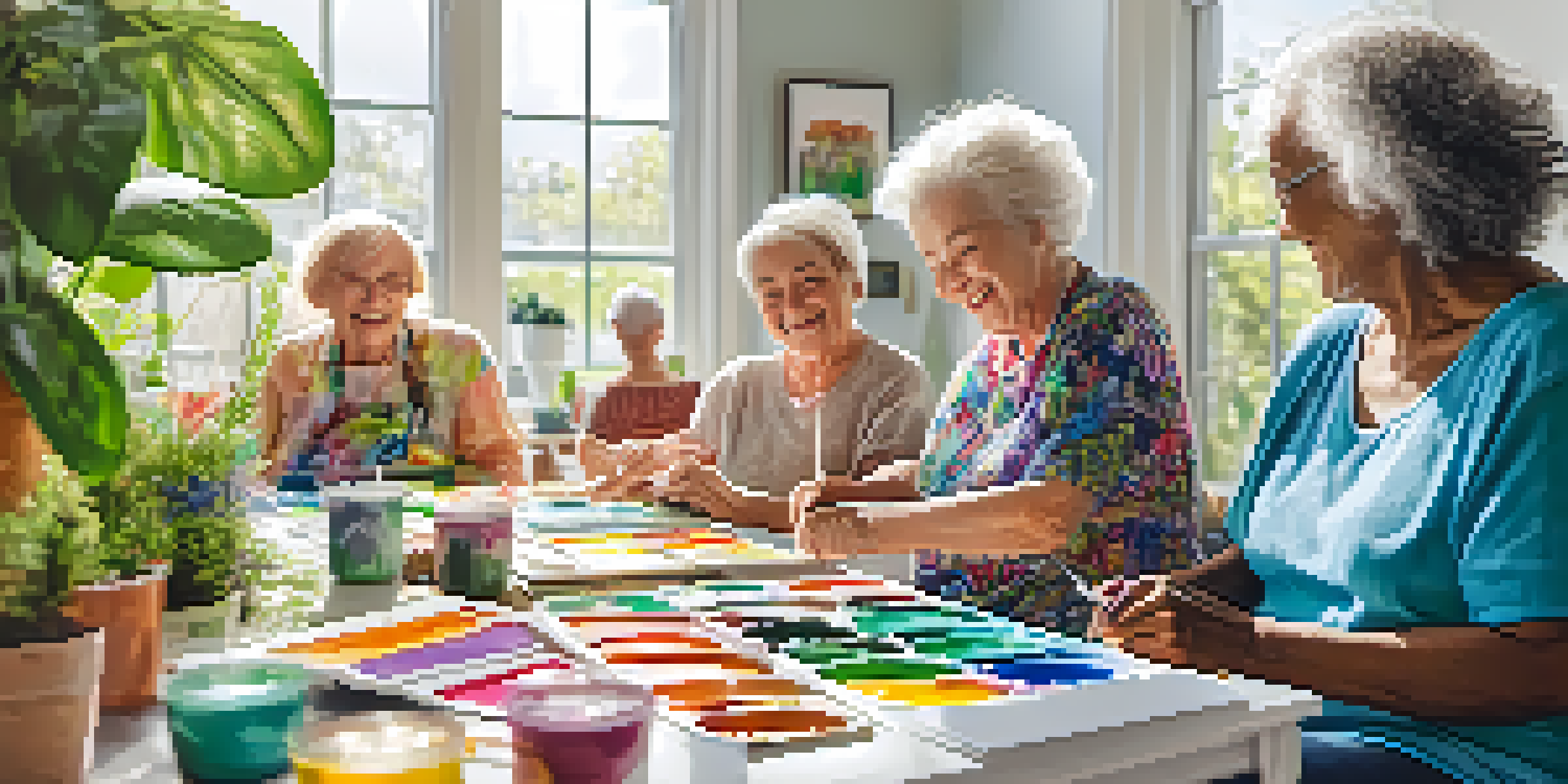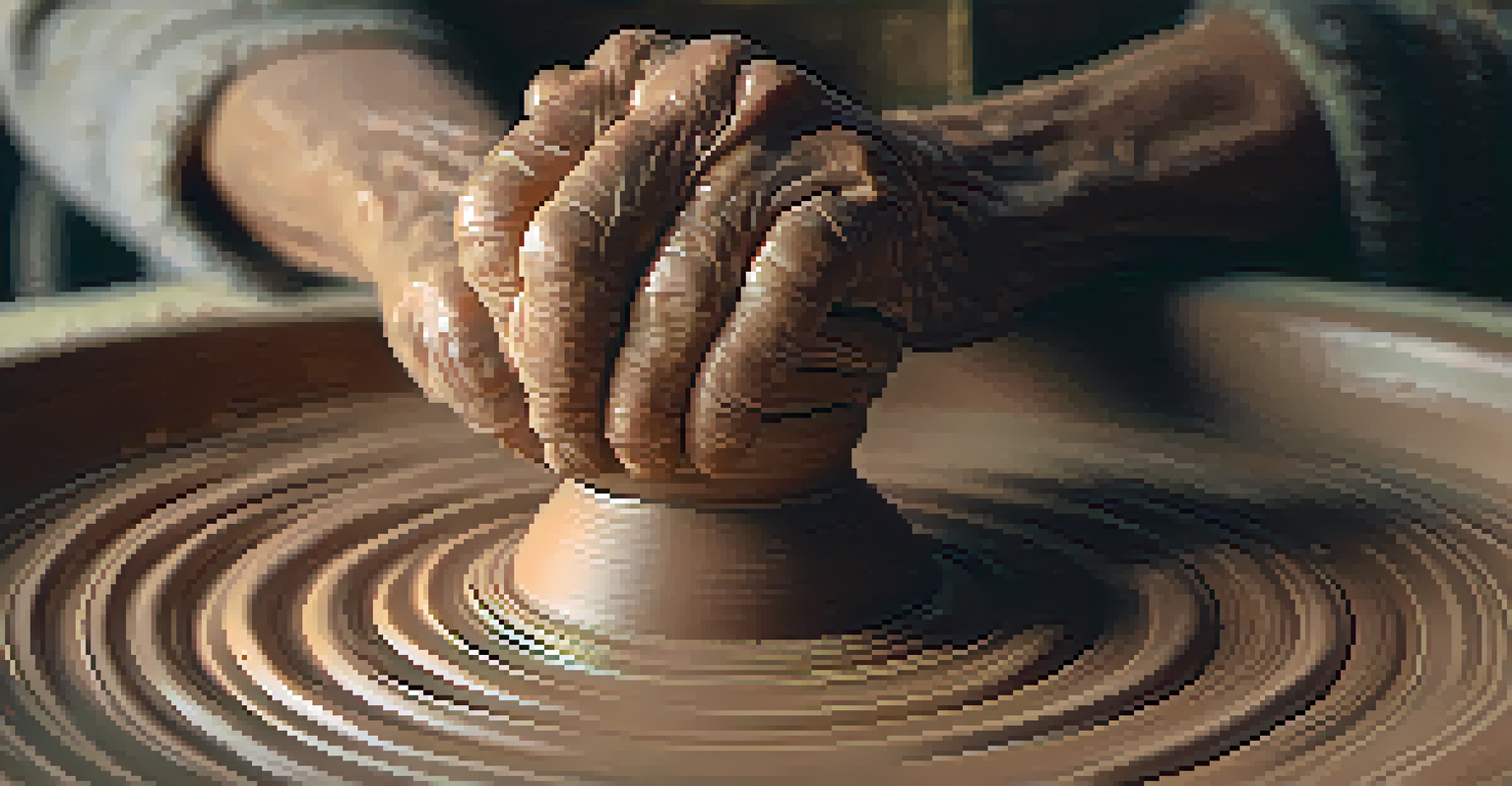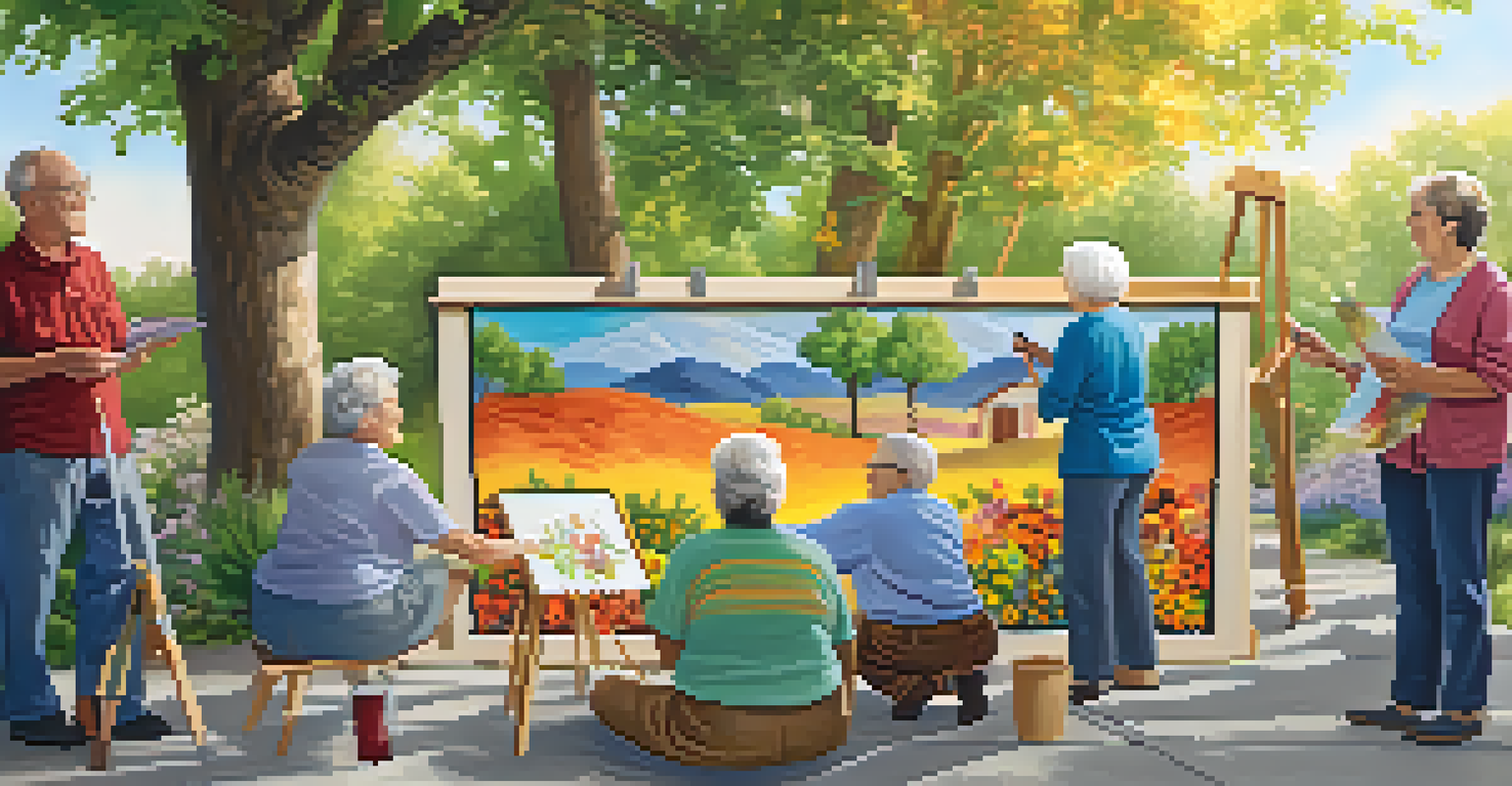Art and Aging: Enhancing Mental Health in Older Adults

The Therapeutic Power of Art for Older Adults
Art therapy is increasingly recognized as a powerful tool for enhancing mental health among older adults. Engaging in creative activities can help reduce feelings of loneliness and depression, which are common in this age group. When older adults express themselves through art, they often find a new sense of purpose and identity, making the process deeply therapeutic.
Art enables us to find ourselves and lose ourselves at the same time.
Moreover, creating art can stimulate cognitive functions, keeping the mind active and engaged. Whether it’s painting, sculpting, or drawing, these activities require focus and imagination, promoting mental agility. It's like a workout for the brain that can lead to improved memory and problem-solving skills.
Additionally, participating in art can foster social connections, which are vital for mental health. Group art classes or community workshops provide opportunities to meet others, share experiences, and build friendships, reducing isolation and enhancing emotional well-being.
Art as a Means of Self-Expression
For many older adults, art serves as a vital outlet for self-expression. As we age, it can become challenging to communicate our feelings, especially if we face physical or cognitive limitations. Art allows individuals to convey emotions and thoughts visually, offering a voice when words may fail.

Creating art can also serve as a reflection of one's life journey. Many older adults find that their artwork tells stories of their past, capturing memories and experiences that shaped who they are. This process can be incredibly validating and affirming, allowing individuals to celebrate their lives and accomplishments.
Art Therapy Enhances Mental Health
Engaging in art therapy helps older adults reduce loneliness and depression while fostering a sense of purpose.
Furthermore, self-expression through art can empower older adults to reclaim their narratives, shifting the perception from vulnerability to resilience. By showcasing their creativity, they can inspire others and reinforce their sense of self-worth.
Cognitive Benefits of Artistic Engagement
Engaging in artistic activities has been linked to various cognitive benefits in older adults. Artistic endeavors often require complex thought processes, which can enhance critical thinking and problem-solving skills. This mental engagement is crucial as it helps counteract cognitive decline often associated with aging.
Every artist was first an amateur.
Moreover, practices like drawing or sculpting can improve fine motor skills and hand-eye coordination. These physical aspects of art contribute to overall brain health, creating a holistic approach to mental wellness. It's a delightful way to keep both the mind and body active.
Research also suggests that regularly participating in creative activities can delay the onset of dementia and other cognitive impairments. By consistently challenging the brain with art, older adults can cultivate a sharper mind, enjoying better cognitive function as they age.
Art and Emotional Resilience
Art can play a significant role in building emotional resilience among older adults. The act of creating something beautiful can instill a sense of pride and accomplishment, which is essential for mental health. This resilience is crucial, especially as older adults face various life changes, such as retirement or the loss of loved ones.
Moreover, art provides a safe space to explore emotions and cope with grief or anxiety. Engaging in creative activities can serve as a form of emotional release, allowing individuals to process feelings in a constructive way. It’s akin to finding a therapeutic outlet that speaks to the heart.
Art Fosters Emotional Resilience
Creating art provides a safe outlet for older adults to process emotions and cope with life's challenges.
The resilience developed through art can help older adults navigate life's challenges more effectively. By fostering a positive mindset and coping strategies, art empowers individuals to face adversity with confidence and grace.
Social Connections Through Art Programs
Participating in art programs not only nurtures creativity but also fosters social connections. Many older adults often experience isolation, which can negatively impact mental health. Art classes or community workshops provide a structured environment for interaction, helping to build friendships and support networks.
These social interactions can enhance the experience of creating art, making it more enjoyable and fulfilling. Sharing artistic endeavors with peers can lead to collaborative projects, where individuals inspire one another and learn new skills. It's a beautiful reminder that art can bring people together.
Additionally, group art activities often create a sense of belonging. This feeling of community can significantly improve emotional well-being, as older adults feel valued and included in a group setting. The shared joy of creating art cultivates connections that extend beyond the studio.
Art as a Tool for Mindfulness
Art encourages mindfulness, drawing individuals into the present moment. When older adults focus on creating, they often find themselves immersed in the process, which can help alleviate anxiety and stress. This state of flow is not only enjoyable but also beneficial for mental health.
Mindfulness through art can also promote relaxation and emotional regulation. The calming effects of painting or crafting can serve as a form of meditation, allowing individuals to clear their minds and find peace amidst life’s challenges. It’s like a mini-retreat for the soul.
Art Programs Build Social Connections
Participating in community art programs helps older adults combat isolation by fostering friendships and support networks.
By integrating mindfulness into their creative practices, older adults can cultivate a more balanced emotional state. This focus on the present can enhance overall well-being, making art a valuable tool for managing stress and anxiety.
Exploring Different Art Forms for Engagement
There are countless art forms that older adults can explore, each offering unique benefits. From painting and pottery to photography and music, the options are endless. Trying out different art mediums allows individuals to discover what resonates with them, fostering a deeper connection to their creativity.
Moreover, diversifying artistic pursuits can keep the experience fresh and exciting. Each new art form presents its own challenges and learning opportunities, stimulating the mind and encouraging growth. It’s like embarking on a delightful journey of self-discovery.

Additionally, engaging in various art forms can enhance social interactions. Different classes or workshops attract diverse groups of people, broadening social circles and enriching experiences. This exploration can lead to new friendships and shared passions, enhancing both creativity and community.